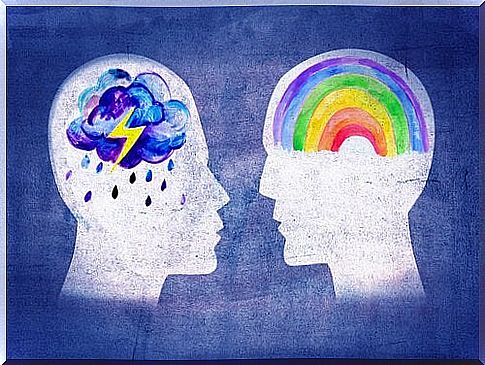How Feelings Affect Our Decision-making

It should come as no surprise that our feelings influence the decisions we make. How many times have you regretted a decision you made during a particular emotional state? You may have noticed that as humans, we generally tend to take more risks when we feel happy, while worry and stress have the opposite effect.
Making decisions when we are angry is usually unsuccessful, as when we are in a state of euphoria. But do you know exactly how your mood affects your decisions? Have you ever been carried away by a first impression when making a decision? Are you aware of how your emotions are manipulated to ‘help’ you make a decision?
Heuristic Affection and Decision Making
Heuristic affection is a mental shortcut that allows people to make decisions and solve problems quickly and efficiently. It also means that emotions (fear, pleasure, surprise, etc.) play an important role in decision-making.
It’s a process that works in our subconscious mind and shortens the time we need to make a decision, allowing people to function without constantly searching their brains for relevant information. This approach occurs quickly and unintentionally in response to a stimulus.

Heuristic affection often arises when we judge the risks and benefits of something depending on the positive and negative feelings we associate with a stimulus. It is similar to behavior based on what your heart tells you.
Researchers have found that when we have positive feelings about something, we are more likely to underestimate the risks and overestimate the benefits. When we have negative feelings about something, we tend to overestimate the risks and underestimate the benefits.
Examples of heuristic affection
To see how heuristic affection works, let’s look at some practical examples. The first example is so obvious that it seems very simple. The second may not.
For starters, imagine two children who are planning to play in the park. One of the children has been playing on the swing at his grandparents’ house for a while and because he likes it so much, he has positive feelings towards the swings in the park. When he sees them, he immediately makes the decision to go to the swings because he is convinced that he will have fun, despite the risks involved in swinging (high profit, little risk), and runs towards them.

However, the other child recently fell off a swing while playing elsewhere. This child believes that playing on the swings is a bad choice (low profit, high risk). Both kids made a mental shortcut to decide the pros and cons of playing on the swings. Neither of them has taken the time to realistically assess the gains and risks, but both have just made their decision based on a memory.
This seems so simple and so obvious in a child. As adults, we also do it in many situations where if we spent a little time thinking reflectively, we would make a different decision.
In making these decisions , the heuristic shows how we experience advantages and disadvantages. While these mental shortcuts allow people to make quick and often fairly accurate decisions, it can also lead to poor decision-making.
For example, consider advertising. In advertising strategies are used to give you a good feeling. It arouses positive emotions, stimulates your passions or introduces a way of life that you can identify with or want.
This makes you much more receptive and willing to pay more for the products and services they offer. In fact, it works so well that we may be tempted to buy products because we think we need them when we really don’t. When we are unable to get our hands on the product that has the claimed need, it can cause us anxiety.
Some scientific observations
Research shows that risks and benefits are negatively correlated in our minds. People base their judgment of an activity or technology not only on what they think about it, but also on how they feel about it.
A study conducted in 1978 by Lichtenstein and colleagues sheds a lot of light on the important role heuristic affect has in decision-making. The researchers found that the judgment of benefits and risks was negatively correlated.
That is, they found that people endure the risk because they have a more optimistic view of the benefits. The same is true the other way around, the greater the risks, the fewer potential benefits.

Certain behaviors, such as alcohol consumption and smoking, are rated as high risk and low gain, while others, such as using antibiotics or vaccines, are rated as high gain and low risk.
Somewhat later, in 1980, Robert B. Zajonc argued that affective responses to stimuli are often the first responses to occur automatically, and that these responses subsequently influence the way information is processed and judged.
In 2000, Finucane and others found that feeling positive about a situation (that is, positive influence) would lead to a lower risk image and a greater benefit image, although of course this is not justified in all situations.
Anyway, people are by far not the rational machine which some to be striving. Like it or not, our minds are willing and determined to make quick decisions using only some of the information available. In fact, we often make decisions before we realize we’ve made them.









